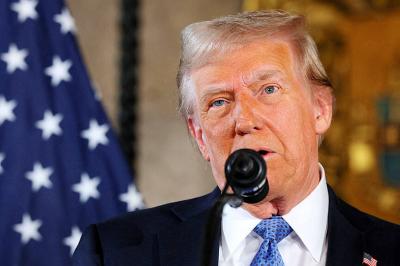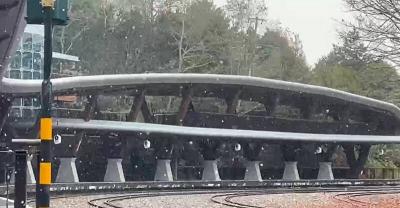More than 40 percent of the blood donated annually in Taiwan is unable to be used to manufacture blood plasma, Taiwan Blood Services Foundation chairperson Yeh Chin-chuan (葉金川) said yesterday at an international seminar on blood plasma.
Blood plasma, extracted from blood by spinning a tube of fresh blood in a centrifuge containing anticoagulant, is responsible for holding blood cells in whole blood in suspension and is used as a protein reserve for the body.
Yeh said that more than half of the donated blood supply is unable to be processed into blood plasma, partly due to insufficient blood mass and partly due to the blood not meeting the requirements for it to be made into blood plasma.
Most of Taiwan’s donated blood is sent to Australia for processing into blood plasma due to a lack of domestic facilities.
Taiwan’s blood donation bags come in two sizes, 250cc and 500cc, of which only the 500cc can be processed into blood plasma products, as the lowest amount required is 400cc, Yeh said.
Over 1.2 million people have donated blood in 250cc bags, while only 650,000 have donated blood in 500cc quantities, Yeh said.
However, blood that is not made into blood plasma is not wasted, Yeh said, adding that most is directly distributed to hospitals to provide blood for whole blood transfusions.
Taipei Medical University Graduate Institute of Biomedical Materials and Tissue Engineering director Thierry Burnouf said medical studies have shown that only people who weigh more than 60kg are considered “physically safe” to donate blood in 500cc quantities as their bodies’ reproduction of cells and blood are capable of sustaining the loss.
Burnouf said Taiwan has the highest blood donation rate in Asia and encouraged more people to donate up to 500cc of blood to help the nation increase its blood plasma reserves.

US President Donald Trump said "it’s up to" Chinese President Xi Jinping (習近平) what China does on Taiwan, but that he would be "very unhappy" with a change in the "status quo," the New York Times said in an interview published yesterday. Xi "considers it to be a part of China, and that’s up to him what he’s going to be doing," Trump told the newspaper on Wednesday. "But I’ve expressed to him that I would be very unhappy if he did that, and I don’t think he’ll do that," he added. "I hope he doesn’t do that." Trump made the comments in

NOT AN OPENING: Trump’s violation of international law does not affect China’s consideration in attacking Taiwan; Beijing lacks capability, not precedent, an official said Taiwanese officials see the US’ capture of the president of Venezuela as a powerful deterrent to Beijing’s aggression and a timely reminder of the US’ ability to defeat militaries equipped with Chinese-made weapons. The strikes that toppled Venezuelan President Nicolas Maduro signaled to authoritarian leaders, including Chinese President Xi Jinping (習近平), US President Donald Trump’s willingness to use military might for international affairs core to US interests, one senior official in Taipei’s security circle said. That reassured Taiwan, the person said. Taipei has also dismissed the idea that Trump’s apparent violation of international law could embolden Beijing, said the official, who was not

A cold surge advisory was today issued for 18 cities and counties across Taiwan, with temperatures of below 10°C forecast during the day and into tonight, the Central Weather Administration (CWA) said. New Taipei City, Taipei, Taoyuan and Hsinchu, Miaoli and Yilan counties are expected to experience sustained temperatures of 10°C or lower, the CWA said. Temperatures are likely to temporarily drop below 10°C in most other areas, except Taitung, Pingtung, Penghu and Lienchiang (Matsu) counties, CWA data showed. The cold weather is being caused by a strong continental cold air mass, combined with radiative cooling, a process in which heat escapes from

Snow this morning fell on Alishan for the first time in seven years, as a strong continental cold air mass sent temperatures plunging across Taiwan, the Central Weather Administration (CWA) said. The Alishan weather station, located at an elevation of about 2,200m in central Taiwan, recorded snowfall from 8:55am to 9:15am, when the temperature dropped to about 1°C, the CWA said. With increased moisture and low temperatures in the high-altitude Alishan area, the conditions were favorable for snow, CWA forecaster Tsai Yi-chi (蔡伊其) said. The last time snow fell at the Alishan weather station was on Jan. 10, 2018, while graupel fell there